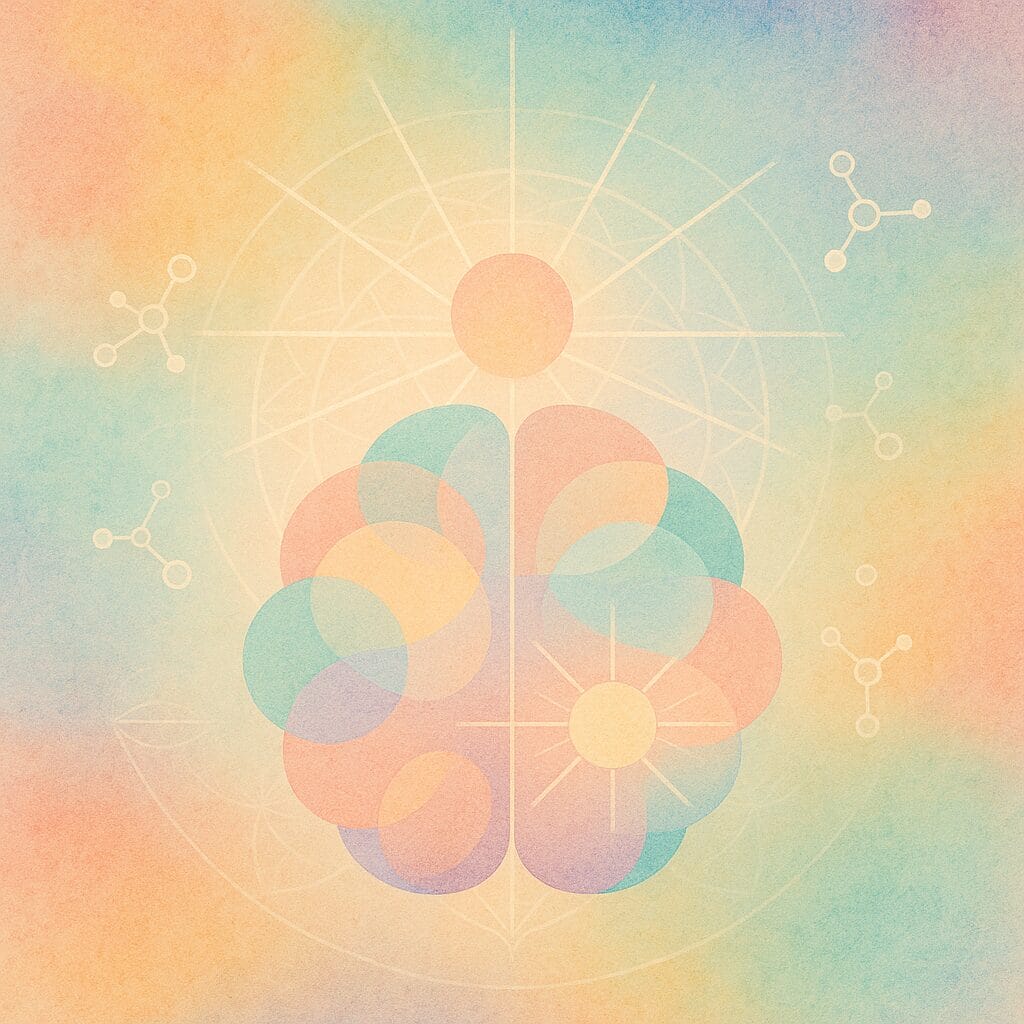By Dr. Bharat Vaidya, B.A.M.S., M.D.
Owner and Founder of Ayurved Sadhana
Dean and Senior Faculty at Ayurved Sadhana
All Rights Reserved – Ayurved Sadhana Vidyalaya, Colorado – U.S.A.
The true healer — ancient or modern — learns to work with the whole person. Not only the chemistry, and not only the spirit, but the interface between them.
Beginning
The mind and spirit are living forces with elements, functions, and dependencies. This feels more natural — more like cause and effect — than the modern habit of trying to separate them.
There is abundant evidence, both in scripture and lived experience, that spirit continues after the decay of the physical body. If this is so — and if it can be approached in a sincere, disciplined, investigative way — then the influence of mind on body, and body on mind, becomes a matter of serious importance. The human being is not divided. We are a unified field, a small part of the vast whole. Every wise physician of every age has agreed to this.
The Unity of Mind, Body, and Spirit
In the Vedas, the world’s most ancient spiritual and scientific teachings, the body (Sharira), mind (Manas), and spirit (Atman) are not treated as separate parts. They are seen as interwoven threads of a single tapestry.
The Taittiriya Upanishad describes five koshas, or sheaths, of human existence:
Annamaya — the physical body, built of food
Pranamaya — the vital energy and breath
Manomaya — the mental and emotional field
Vijnanamaya — the higher intellect, discernment, and knowing
Anandamaya — the sheath of bliss, or spiritual essence
These sheaths do not operate in isolation. They overlap, penetrate, and influence one another in subtle but powerful ways.
Modern psychology and neuroscience are slowly arriving at a similar view. The old “mind-body split” is dissolving. We now acknowledge that mental states shape physiology, and physiology shapes mental states. The ancient model was already holistic.
Mind Over Matter: Vedic Insight and Psychological Reality
The Vedic rishis taught that Chitta (the storehouse of impressions, thoughts, memories) shapes Karma (action) and even Sharira (the body). Illness, or Vyadhi, is not only a physical malfunction. It can also reflect deeper mental, emotional, or karmic imbalance — some of which may even echo across family lines and genetics.
Modern psychology now speaks in similar language: chronic stress, unresolved trauma, and longstanding patterns of fear or anger are known to contribute to conditions such as high blood pressure, digestive disorders, inflammation, and immune disturbance.
We see this in biochemistry:
Cortisol, the primary stress hormone, when elevated for too long, weakens immunity and accelerates aging.
Serotonin, sometimes called a “happiness neurotransmitter,” is closely tied to the gut. This affirms what Ayurveda has taught for millennia: digestion, mood, and immunity are inseparable.
In other words: the mind writes itself into the body. The body answers back.
Brain Chemistry and the Yogic Science of Mind
The Yoga Sutras of Patanjali define yoga as:
“Yogash chitta-vritti-nirodhah.”
Yoga is the settling, or quieting, of the fluctuations of the mind.
This is not just poetry. It is physiological.
Traditional yogic practices — pranayama (breath), meditation, mantra — can influence brain chemistry, nervous system tone, and long-term stress response:
Meditation supports calmer mental states and greater clarity of attention.
Deep, paced breathing can lower reactivity in the fear centers of the brain and soothe the stress response.
Repetitive mantra, sound, and vibration can support rest-and-repair states in the body, encouraging healing, digestion, and emotional regulation.
From the Vedic view, this is called Manas Shuddhi — purification and stabilization of the mind. When the mind is steadied, the body tends to follow into balance, and the light of the soul (Atman) is less obstructed.
This understanding is especially important in Garbha Dharana (preparing for conception and pregnancy) and Garbha Samskara (nourishing mother and baby before and after birth). Ayurveda teaches that cultivating purity, steadiness, and sattva (clarity, harmony) in the mind is just as essential as nutrition or hormones. Without sattva, technique alone cannot complete the work.
From Neuroplasticity to Samskara: Rewiring the Mind
Modern neuroscience uses the term neuroplasticity to describe the brain’s ability to rewire itself based on repeated thoughts, experiences, and habits. Vedic philosophy uses a parallel term: Samskara — the mental and emotional impressions carved into us by repetition.
Negative experiences, pain, and fear can etch samskaras that keep repeating themselves. But the opposite is also true. Consistent practice of:
Sattvic thought (clarity, nonviolence, steadiness)
Bhakti (devotion, loving focus)
Jnana (knowledge, wisdom)
…can reshape the mind’s landscape over time.
In Ayurvedic language, this is part of training the Manomaya Kosha — the field of mind — so it no longer storms against the body, the hormones, the nerves, and the digestion, but instead supports them.
Life Beyond the Body: On the Continuity of Consciousness
The Vedic seers affirm that consciousness (Chaitanya) is not produced by the brain. Rather, consciousness is the underlying field, and the body is one instrument through which it expresses.
The Bhagavad Gita teaches:
“Na hanyate hanyamāne śarīre.”
The soul is not destroyed when the body is destroyed.
Modern exploration into near-death experiences, states of awareness reported during clinical “brain silence,” and transpersonal psychology all point to a difficult truth for materialism: we may not be able to reduce consciousness to chemistry alone.
In certain documented cases, memories and traits appear to carry over in ways that echo the Vedic teachings of karma and rebirth. Whether one accepts this literally or symbolically, the question itself opens the door to a larger view of what a human being is.
In the End: A Message for the Modern Healer
As we look forward — in psychology, medicine, neuroscience, birth work, caregiving, and end-of-life care — a path emerges.
Vedic wisdom asks us to see the human being not as parts, but as a continuum of:
Elemental biology
Emotional and mental experience
Spiritual presence
Modern science, at its best, is beginning to agree.
The true healer — ancient or modern — learns to work with the whole person. Not only the chemistry, and not only the spirit, but the interface between them.
Only in this vision can real healing begin.
“जीवनं बीजात् आगत्य पुनः बीजं गच्छति.”
“Life comes from the seed and returns to the seed.”
— Dr. Bharat Vaidya
SIGN UP TODAY FOR AYURVED SADHANA NEWSLETTER!
CHECK OUT OUR OTHER BLOGS:
All rights reserved by Ayurved Sadhana Vidyalaya,Dr. Bharat Vaidya and Anupama Vaidya. Do not distribute or publish this material.





